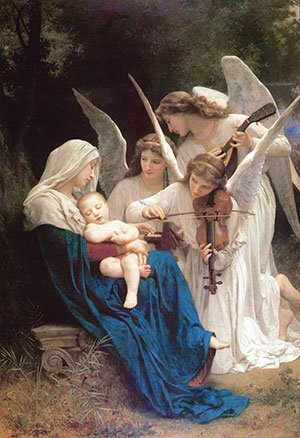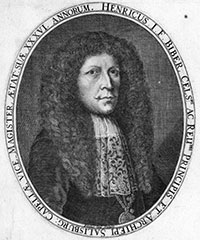Biber and the ‘Rosary Sonatas’
 When one thinks about the great Catholic compositions offered to the glory of God throughout history, the first thought is probably Gregorian chant or the choral music of Giovanni Pierluigi da Palestrina. However, instrumental sacred music – particularly that of the Baroque period – has rightfully earned a prominent place in Church music history.
When one thinks about the great Catholic compositions offered to the glory of God throughout history, the first thought is probably Gregorian chant or the choral music of Giovanni Pierluigi da Palestrina. However, instrumental sacred music – particularly that of the Baroque period – has rightfully earned a prominent place in Church music history.
Many Baroque Catholic instrumental composers were virtuosi, such as keyboardist Giralomo Frescobaldi (1583-1643) and violinist Heinrich Ignaz Franz von Biber (1644-1704). The latter’s “Mystery Sonatas” (or “Rosary Sonatas”) are of particular interest to the faithful in the month of October.
Biber (pronounced BEE-burr) spent most of his career employed by the Archbishop of Salzburg in Austria. Although he composed numerous works, he is most remembered for his “Mystery Sonatas” that he composed in the 1670s. Each sonata represents one of the 15 mysteries of the rosary (the joyful, the sorrowful and the glorious). While somewhat uncertain, it is believed these were originally performed as postludes to services in October.
In the Baroque era, which ran roughly from 1600 to 1750, instrumental sacred music finally came into its own and began to be placed on equal footing with vocal sacred music. The term “sonata” is almost exclusive to instrumental music and means “to be sounded.” In Baroque sonatas, there are typically four movements and they are rather short in contrasting tempos. Biber’s “Mystery Sonatas” are scored for violin and basso continuo, meaning a keyboard instrument and bass-sustaining instrument (such as an organ and a cello), with the violin playing the prominent, melodic role.
The 10th sonata is of particular interest because of its unusual use of program music – instrumental music that has extra-musical associations (for instance, “Sposalizio” by the devout Catholic composer Franz Liszt based on the Raphael painting “The Marriage of the Virgin”). In this sonata, Biber tells the story of the Crucifixion through music. Program music was uncommon in the Baroque era, with the “Four Seasons” by Antonio Vivaldi (also a devout Catholic and ordained priest) being a well-known exception.
In the “Mystery Sonatas,” Biber uses a rare technique called “scordatura,” which literally means “mistuning.” This means the violin strings are tuned to pitches specified at the opening of each sonata by Biber rather than the standard tuning. (In the 10th sonata, only the top string is different, and tuned to D instead of E.)
This sonata opens with a “Praeludium” (Latin for “Prelude”) and following the initial chord, the violin repeats assertive, dotted rhythms to illustrate through sound the nailing of Our Lord to the cross. The rhythmic motive recurs throughout the entirety of the movement – reminding the listener of the pain Jesus endured for our sins. It is worth noting that the “Praleudium” is in the key of G minor, a tonality associated with unease and gnashing of teeth.
The Crucifixion sonata ends with an aria with variations, and here one can see Biber’s programmatic genius as he portrays the earthquake described in the Gospel of St. Matthew in Chapter 27:51 that follows Our Lord’s last breath. In the final minute of the work, the violin plays rapid, repeated notes that emulate the earth trembling as described in the scripture passage.
During this month of the rosary, the entire collection of Biber’s “Mystery Sonatas” is a new way of considering and reflecting upon the mysteries of the rosary.
— Christina L. Reitz, Ph.D., Special to the Catholic News Herald. Christina L. Reitz, Ph.D., is professor of music at Western Carolina University in Cullowhee.
Listen online
Listen to Biber’s “Mystery Sonatas” while following along with the musical score itself.


